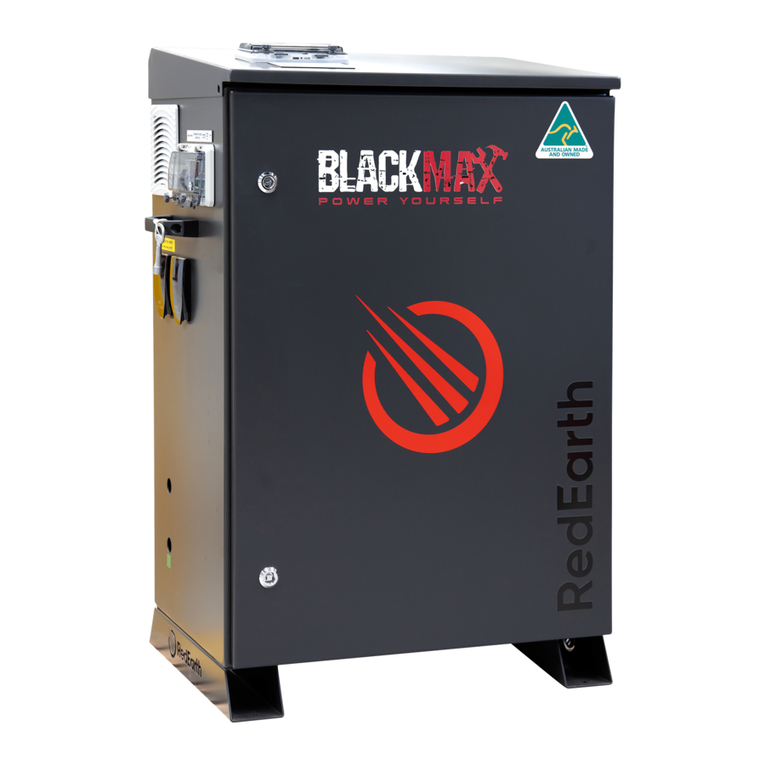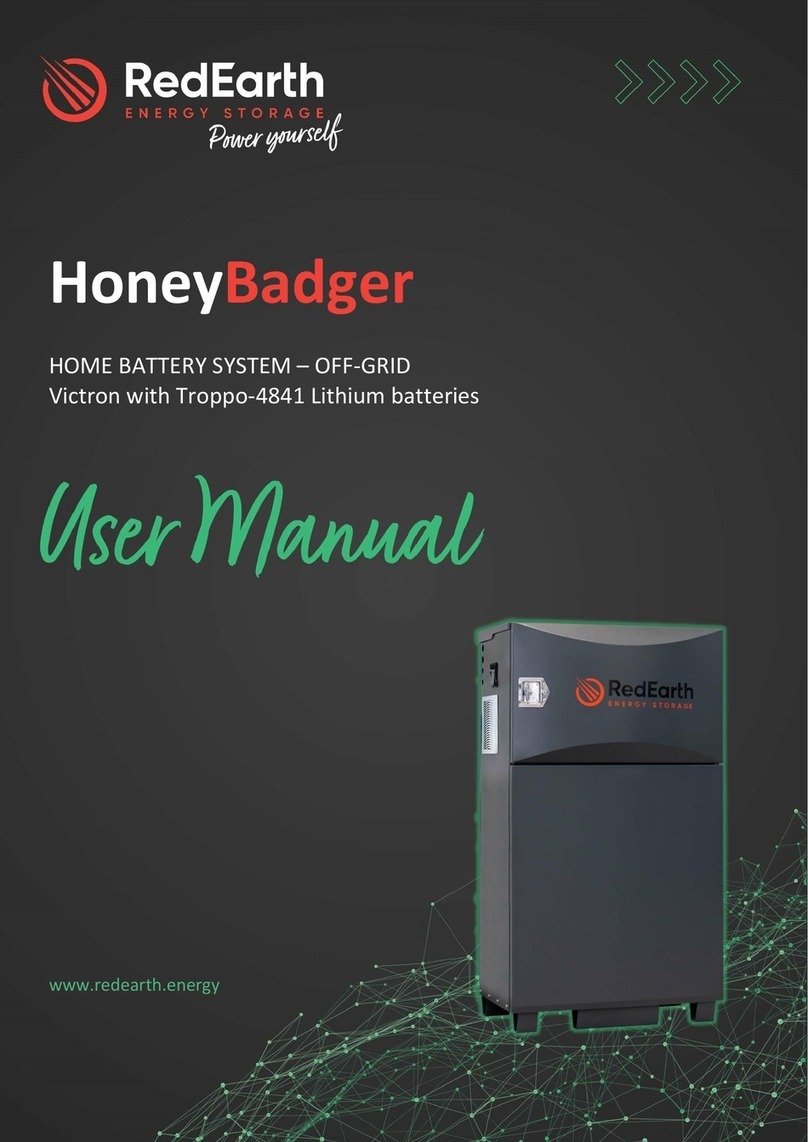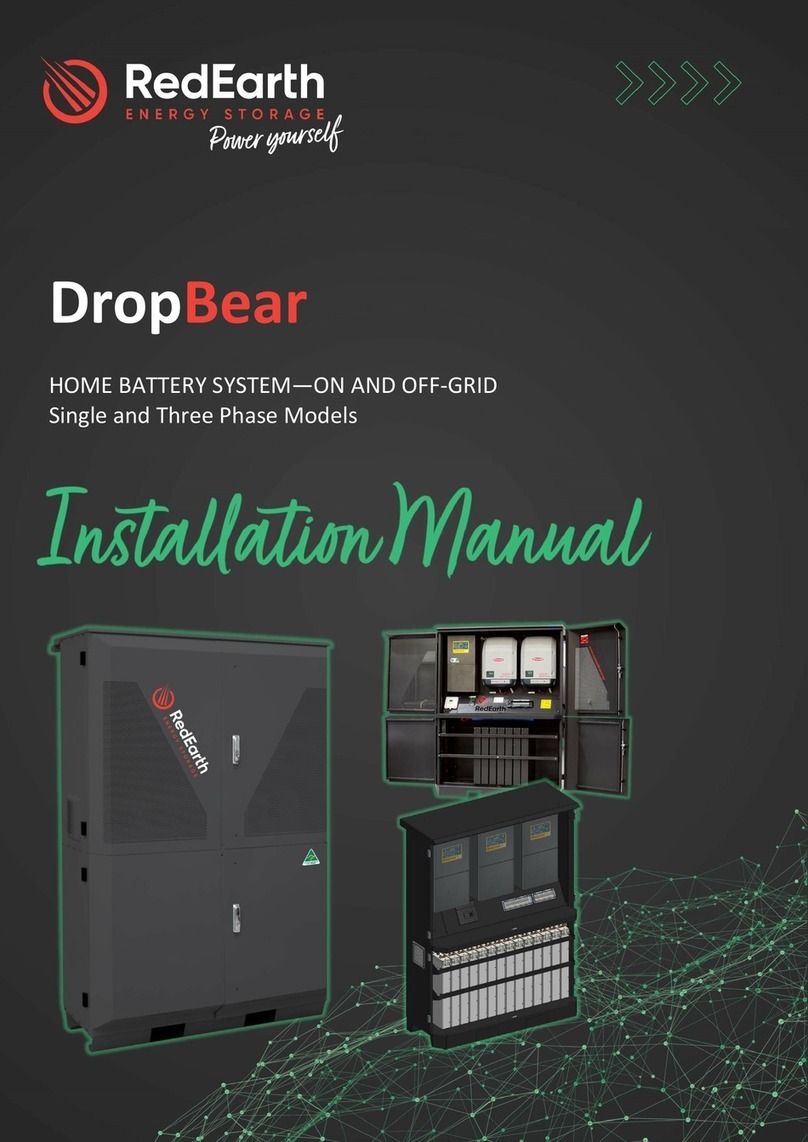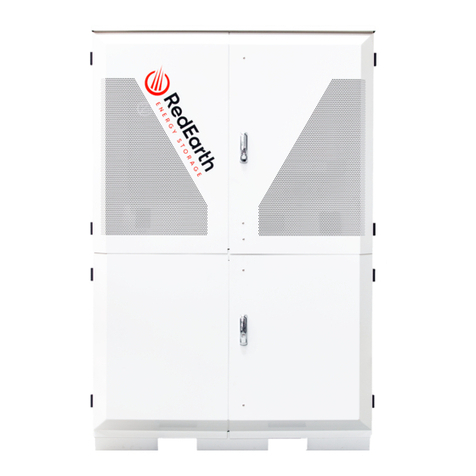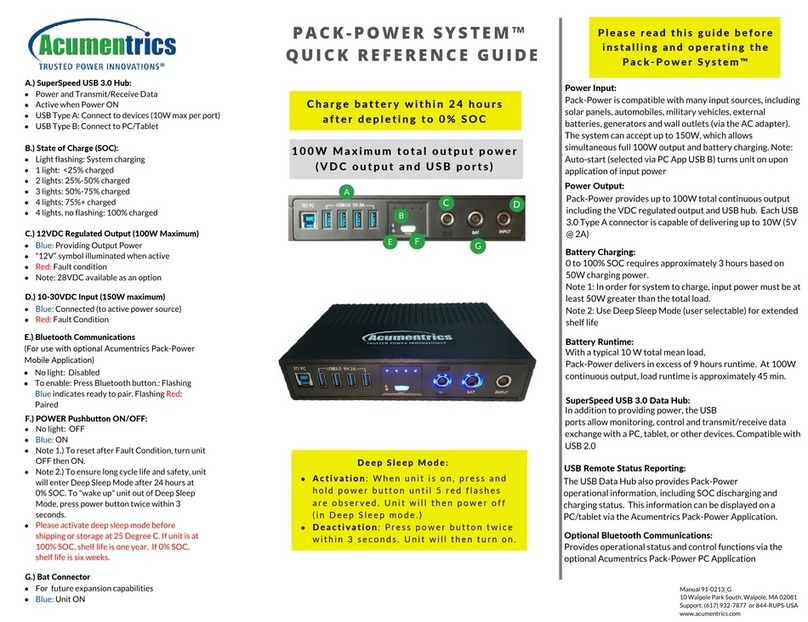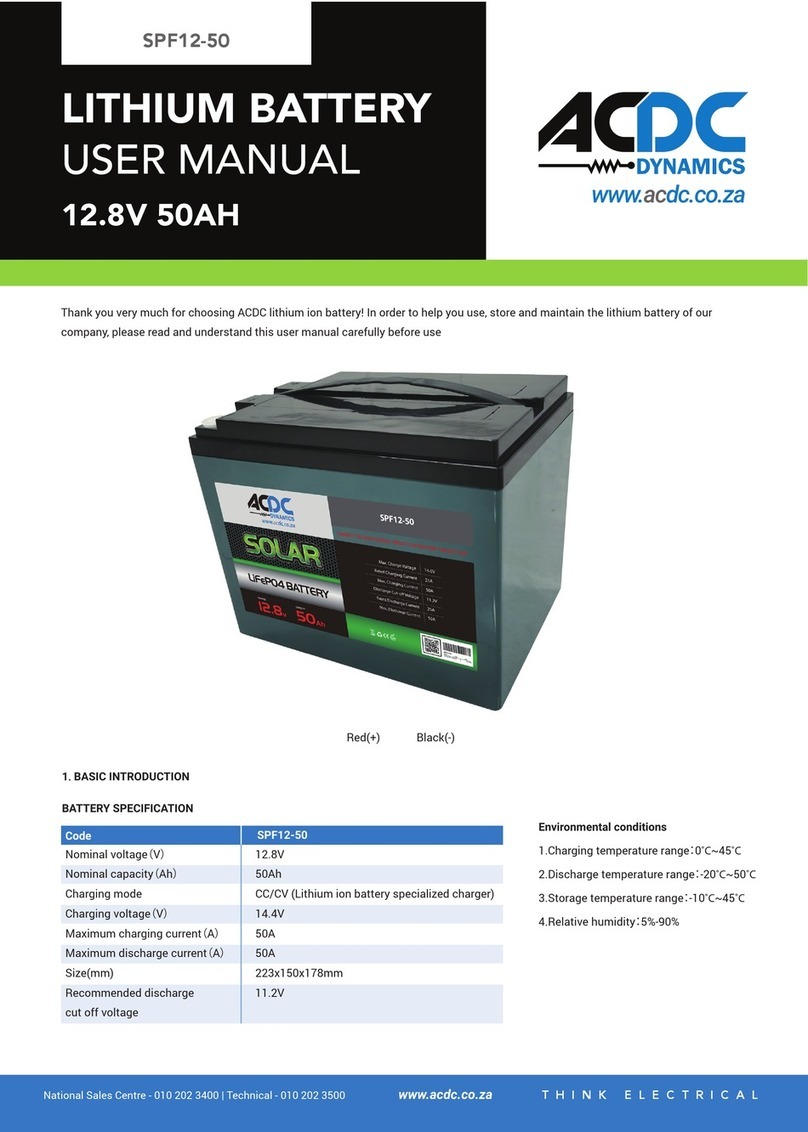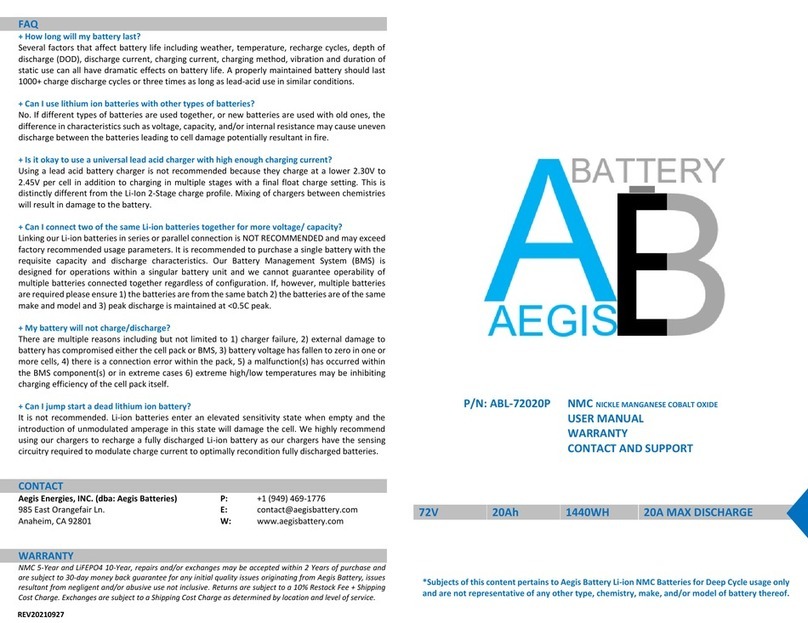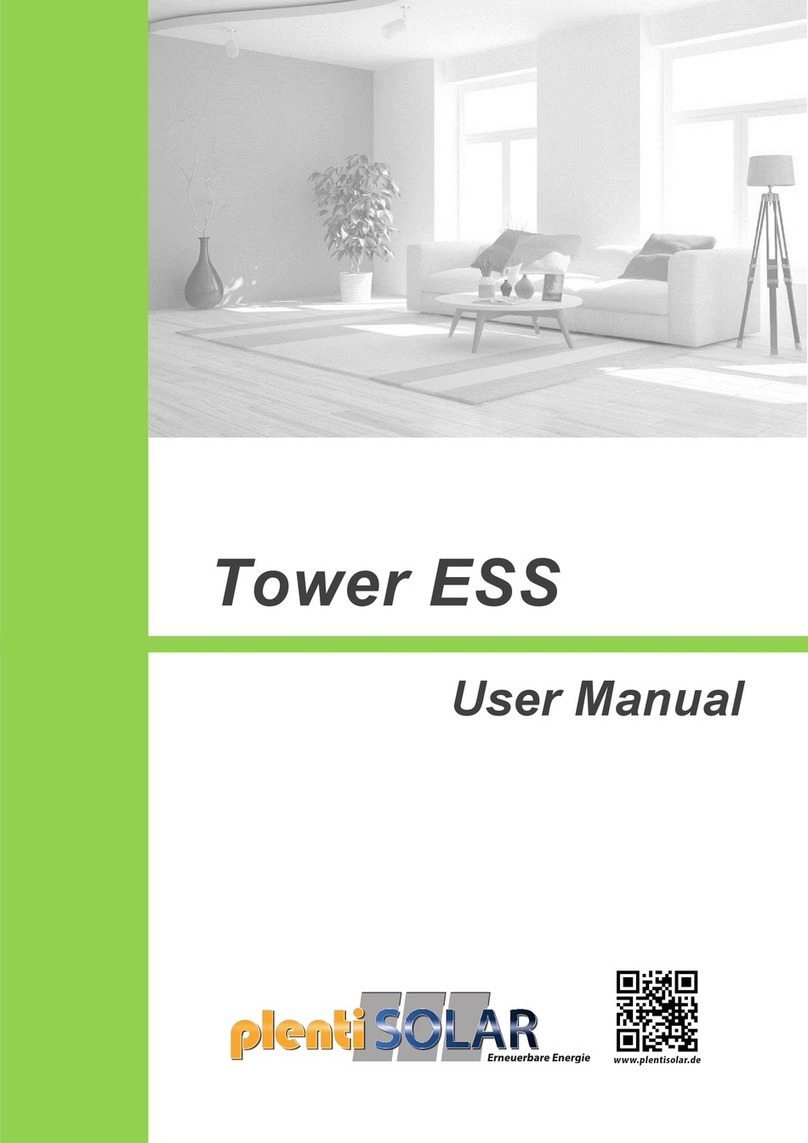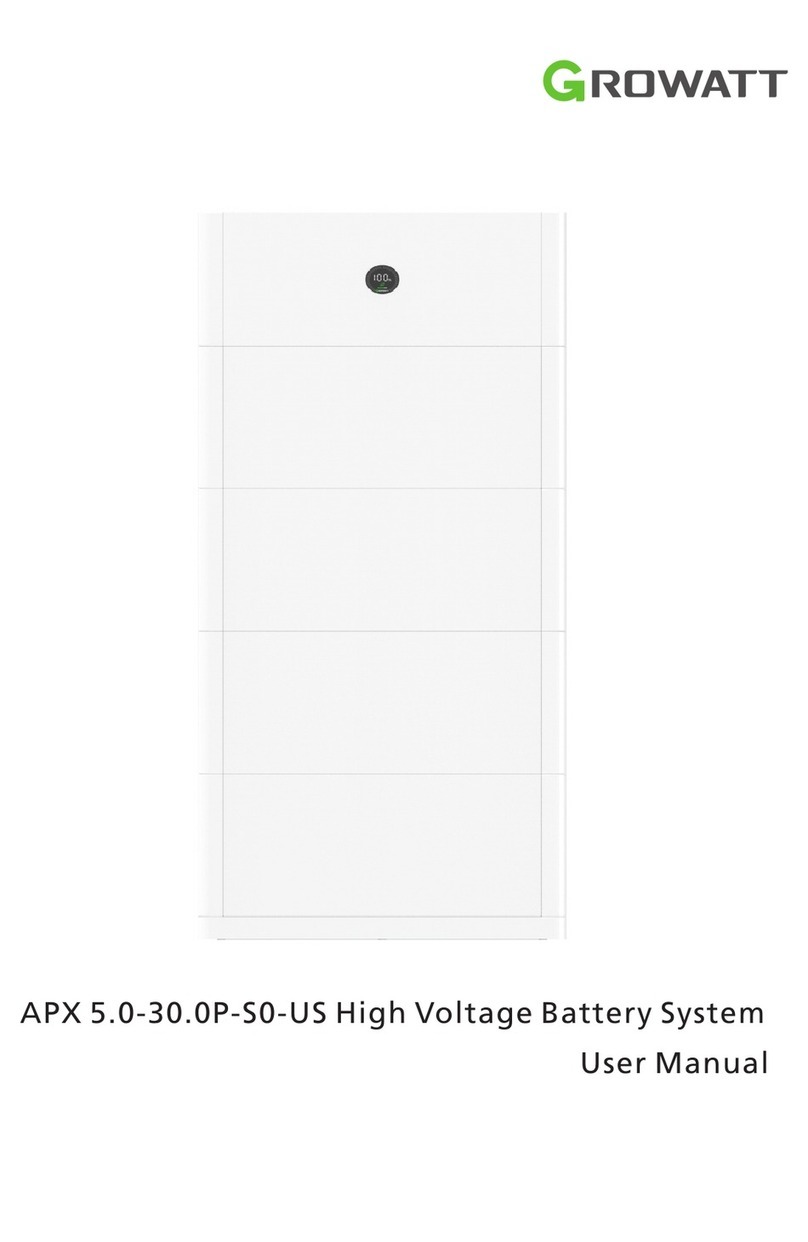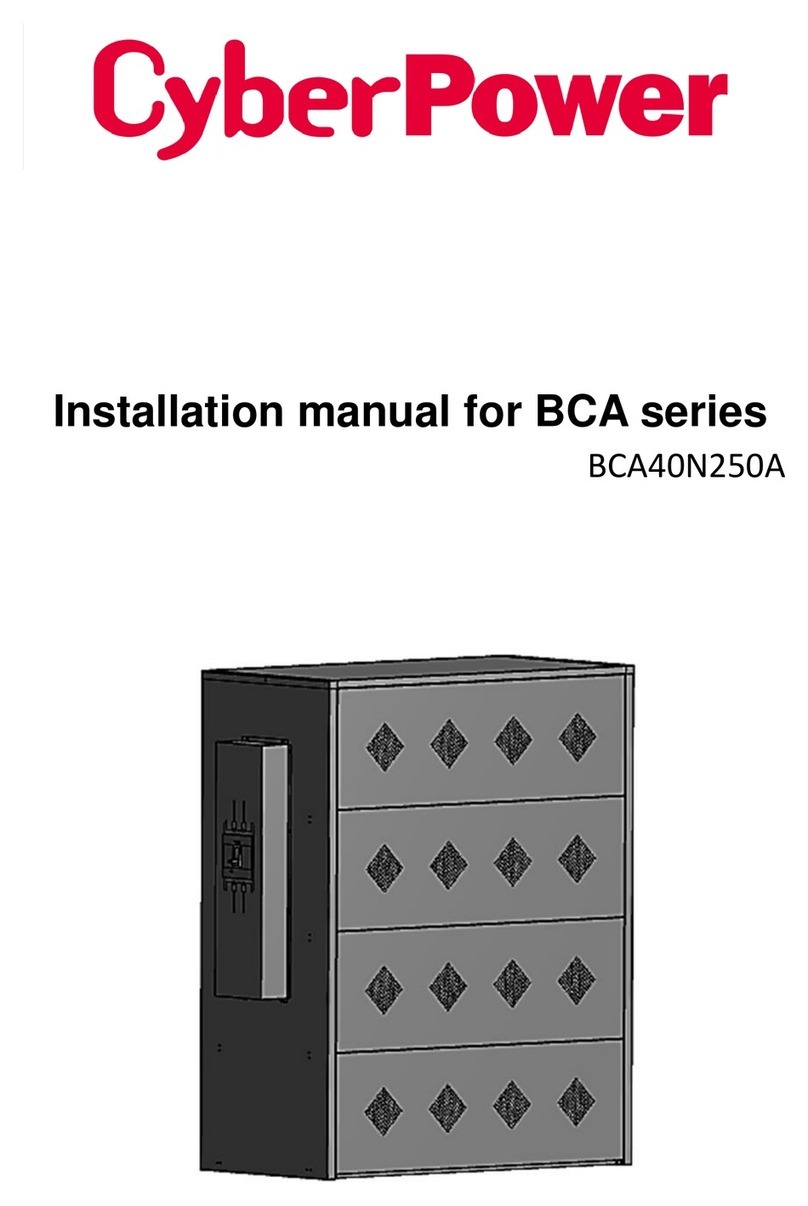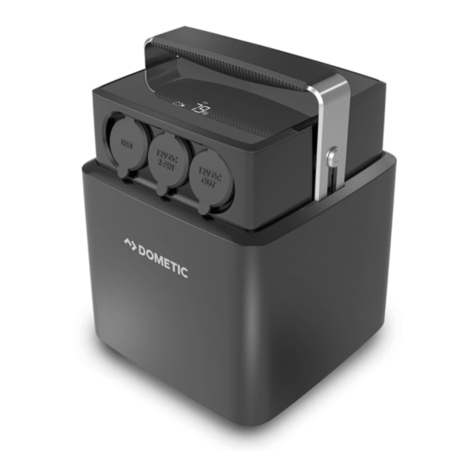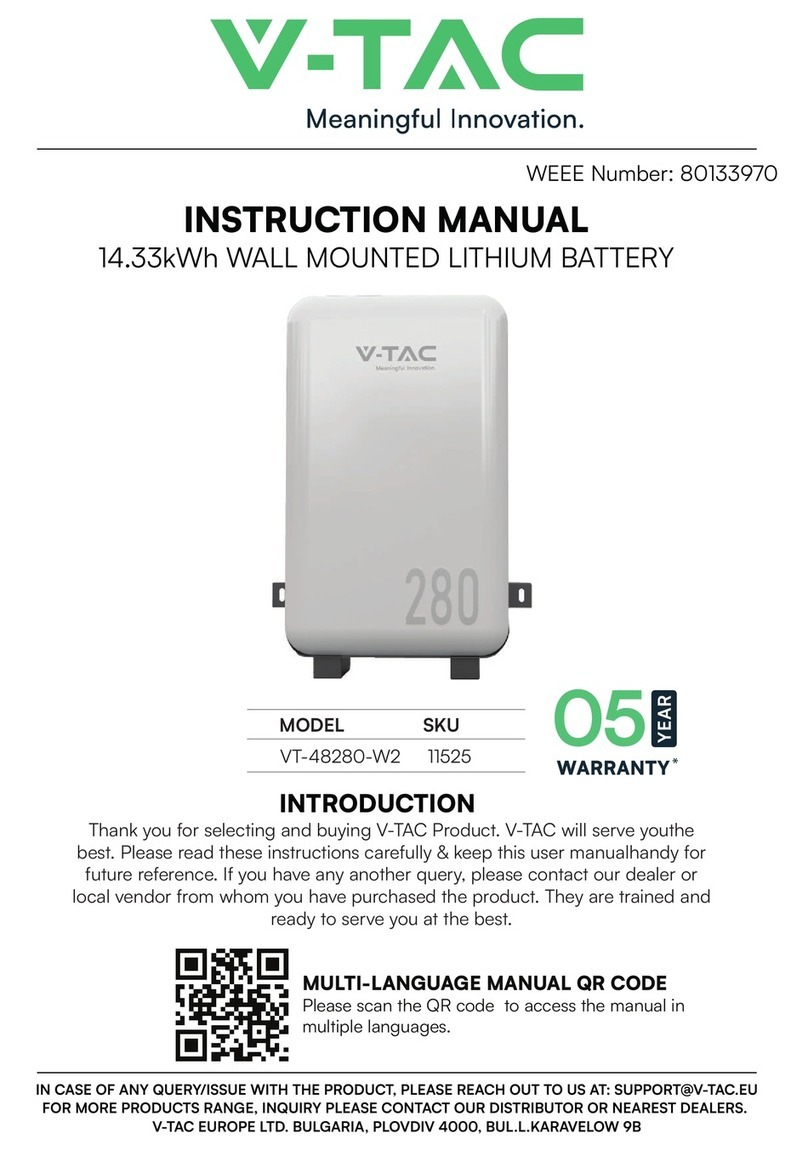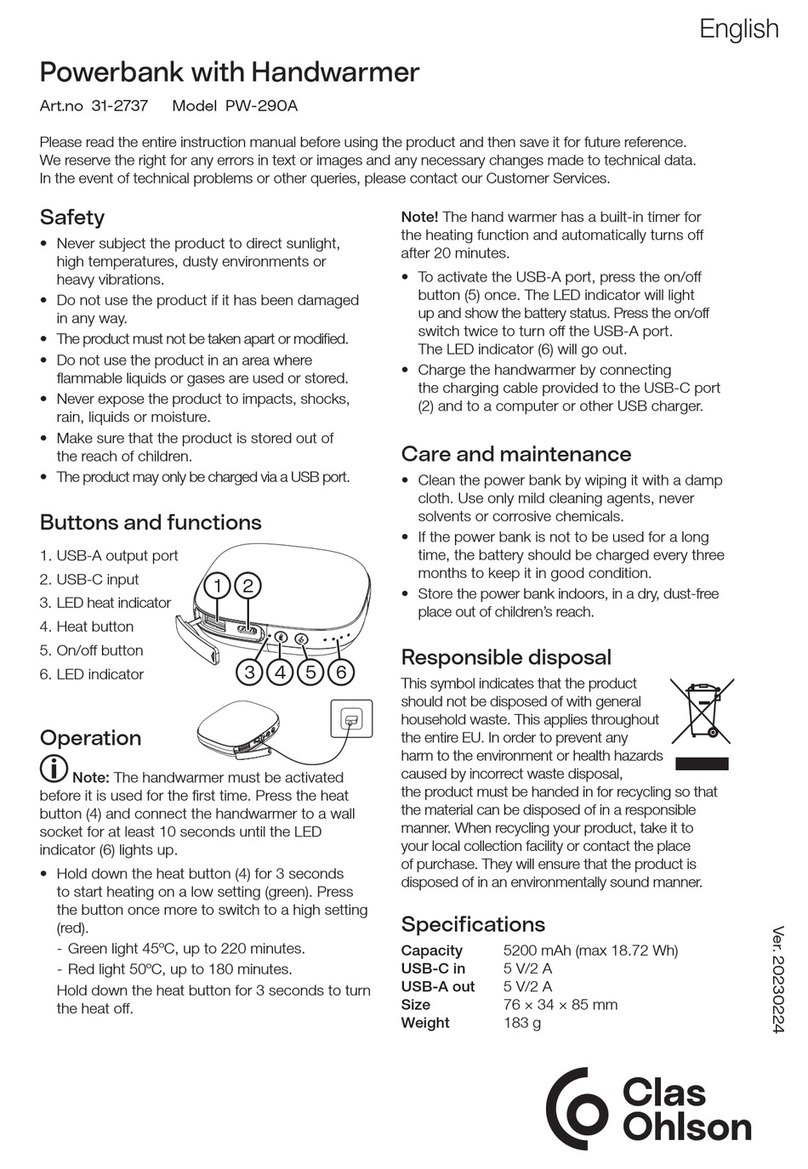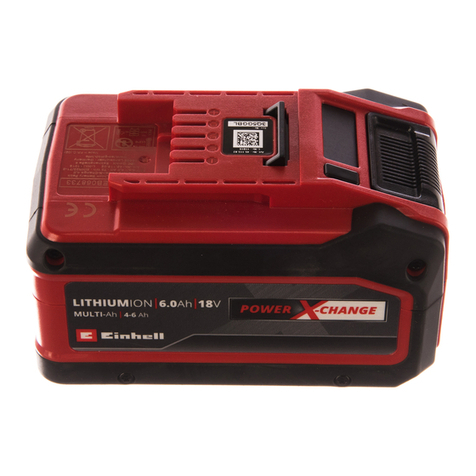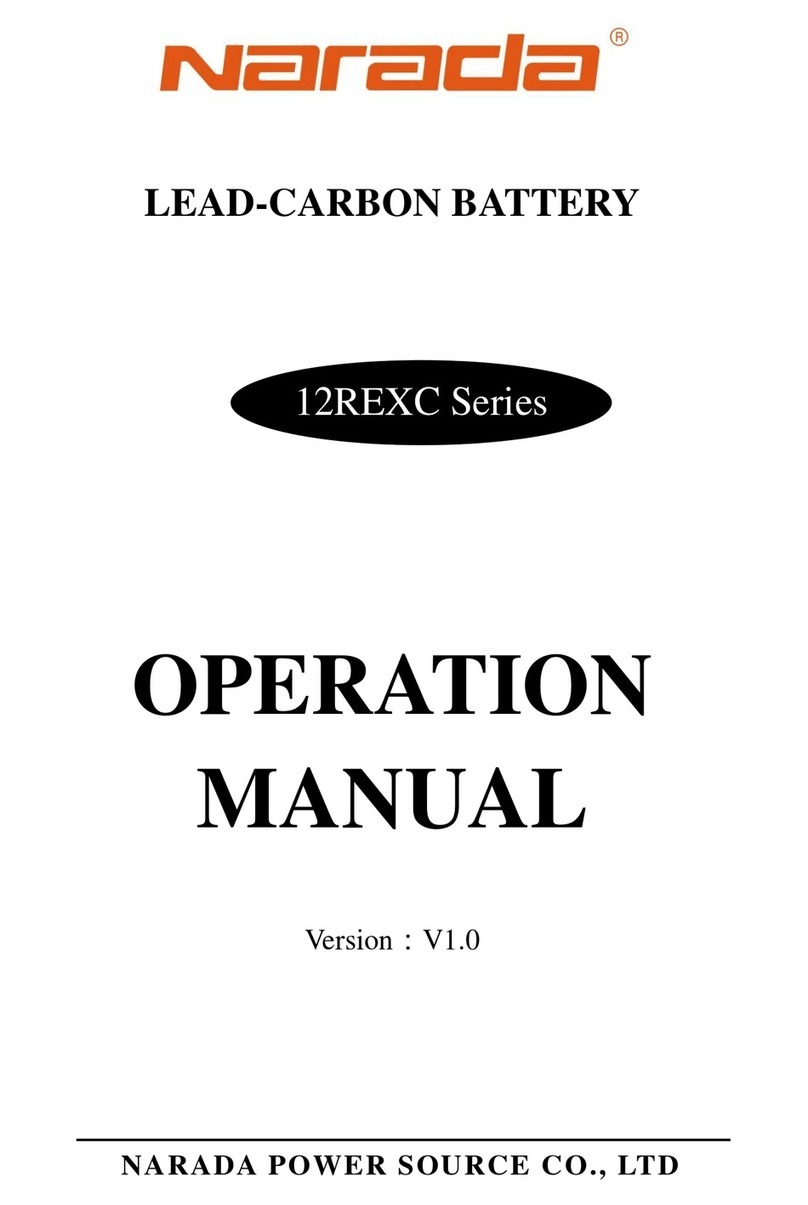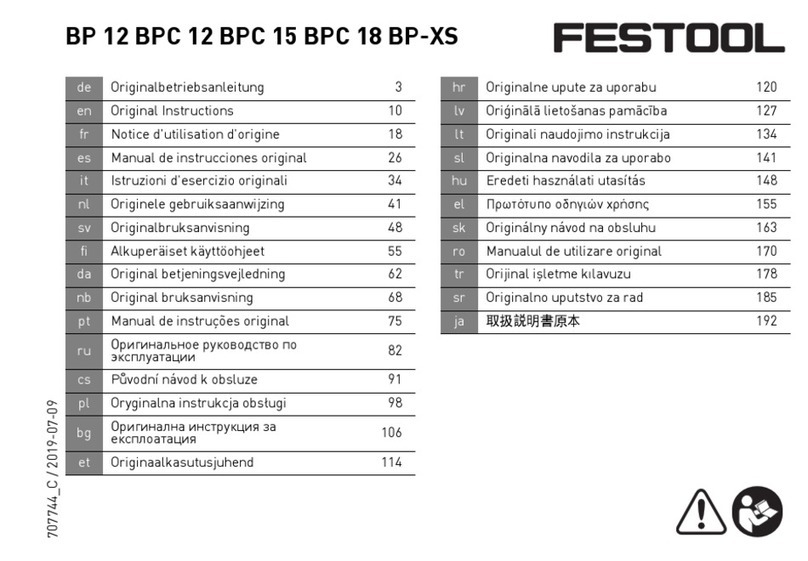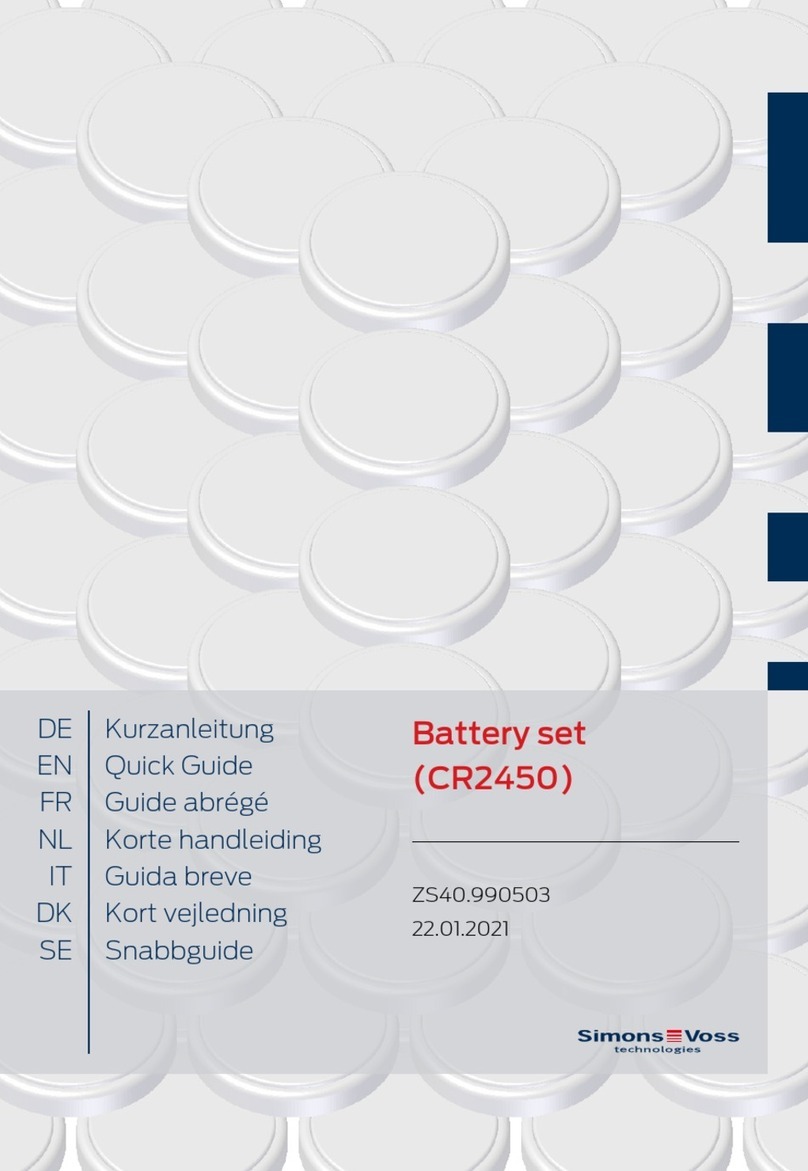
Troppo 4841 Self-managed lithium battery – Installation and Operation Manual
Page 3 of 19
Issue date: 14/09/2023. Version 2.0
Safety instructions
Installers and users are responsible for familiarising themselves with this manual.
The Troppo-4841 battery is certified to IEC62619:2017, IEC60950 and UN 38.3. It is listed on the Australian CEC (Clean Energy
Council) list of approved batteries. IEC62619 is required to be able to sell this type of battery in Australia.
The Troppo battery uses high-quality cylindrical Lithium Ferro Phosphate (LFP) cells which are safe, robust, and reliable in higher
ambient temperatures. The cells themselves are also certified to IEC62619 (2015) by TuV, specifically for RedEarth, and have
industry leading service life. They are fully recyclable.
Each Troppo battery self-manages its operation via an internal Battery Management System (BMS) designed by RedEarth that
provides high surge capacity together with protection against operation in over and under temperature, over and under voltage,
over current (charging), as well as short circuit (discharging) protection. It also extends the service life of the battery through
internal balancing of the individual cell strings.
The maximum short-circuit current for each Troppo battery is 0.4kA. If multiple Troppo batteries are installed, then the maximum
short circuit current of the battery bank is:
0.4kA x number of Troppo batteries connected in parallel.
Note
that the Troppo
battery is only designed to be connected in parallel as a nominal 48Vdc string of batteries. They will not work if connected in
series.
Low voltage protection feature: The Battery Management System (BMS) has a feature that shuts down the battery if the battery
becomes deeply discharge and the voltage falls below 40V+/-2 volts. This is to protect the cells from damage. See the
relevant section of this instruction manual to restart the battery.
The battery includes a 2-pole non-polarised circuit breaker (K-curve) specifically manufactured for RedEarth. A 2-pole circuit
breaker is required to meet Australian standards for battery installations. A single pole circuit breaker alone is not normally
sufficient in Australia as batteries are usually installed with a floating negative, unlike e.g., in the USA where the negative
terminal is usually grounded to earth and so only a single-pole circuit breaker is required on the positive cable.
Other safety features of the Troppo battery include the use of touch-safe high-quality industry standard Amphenol Surlok DC
connectors for safe and easy connection of the DC battery cables. These have a significant safety advantage over legacy
systems using exposed bolted terminals. Bolted connections present a short-circuit risk as well as the possibility of a loose
connection becoming a hot-joint.
The display included in the Troppo battery increases safety by showing the voltage and current status of the battery at all
times, including arrows indicating if the battery is charging or discharging. This is helpful when batteries are being connected in
parallel, and larger balancing currents can flow if the battery voltages are not similar. Note that the BMS includes a safety
feature that does not allow current to flow if the battery voltages are different by more than 2-3 volts. Bring the battery voltages
closer together by charging or discharging one of the batteries before reconnecting.
The display also includes an odometer function that shows the total energy in kWh that has flowed out of the battery over its
lifetime. The Troppo battery is warranted to deliver at least 10,000kWh over its lifetime. It can also be useful for indicating if one
battery in a string is not doing as much work as other batteries.
A status indicator light is also included on the battery. This is always lit when the battery circuit breaker is on, and the battery is
ready for use. If the battery has shutdown due to under-voltage protection shutdown, then it will not light up. The light also
incorporates a momentary button feature that is for future developments of the battery.
Installation:
Installation should only be performed by qualified and experienced installers who can specify the correct cable sizes and DC
bus arrangement, external circuit protection, polarity checking and suitability of the design for the application.
Note:
RedEarth provides Troppo battery compatible, factory built and tested pre-wired battery enclosures and energy storage
systems designed and engineered to meet Australian standards. These can significantly simplify installation.
Transportation:
Lithium Ferro Phosphate Batteries are classed as Dangerous Goods (DG) Class 9 UN3480 and therefor safe for transport. The
batteries are shipped in approved transport protection packaging in a partially discharged state with terminal protection in place
and the circuit breaker off.
Basic Safety and handling:
• Battery pack is intended to be a 2 person lift when being installed.
• Battery should not be exposed to temperatures above or below the temperature rating specified in this manual.
• Battery should not be installed where it is in direct sunlight, or where it can become wet.
• Battery should not be exposed to strong impacts, crushed, or punctured.
• Do not short the battery terminals or connect with reverse polarity!
• Battery should not be disassembled unless qualified and approved by RedEarth to do so.
• Battery should be kept away from animals and children.
• The maximum stacking height for transport is 8 batteries when in RedEarth’s transport box.
